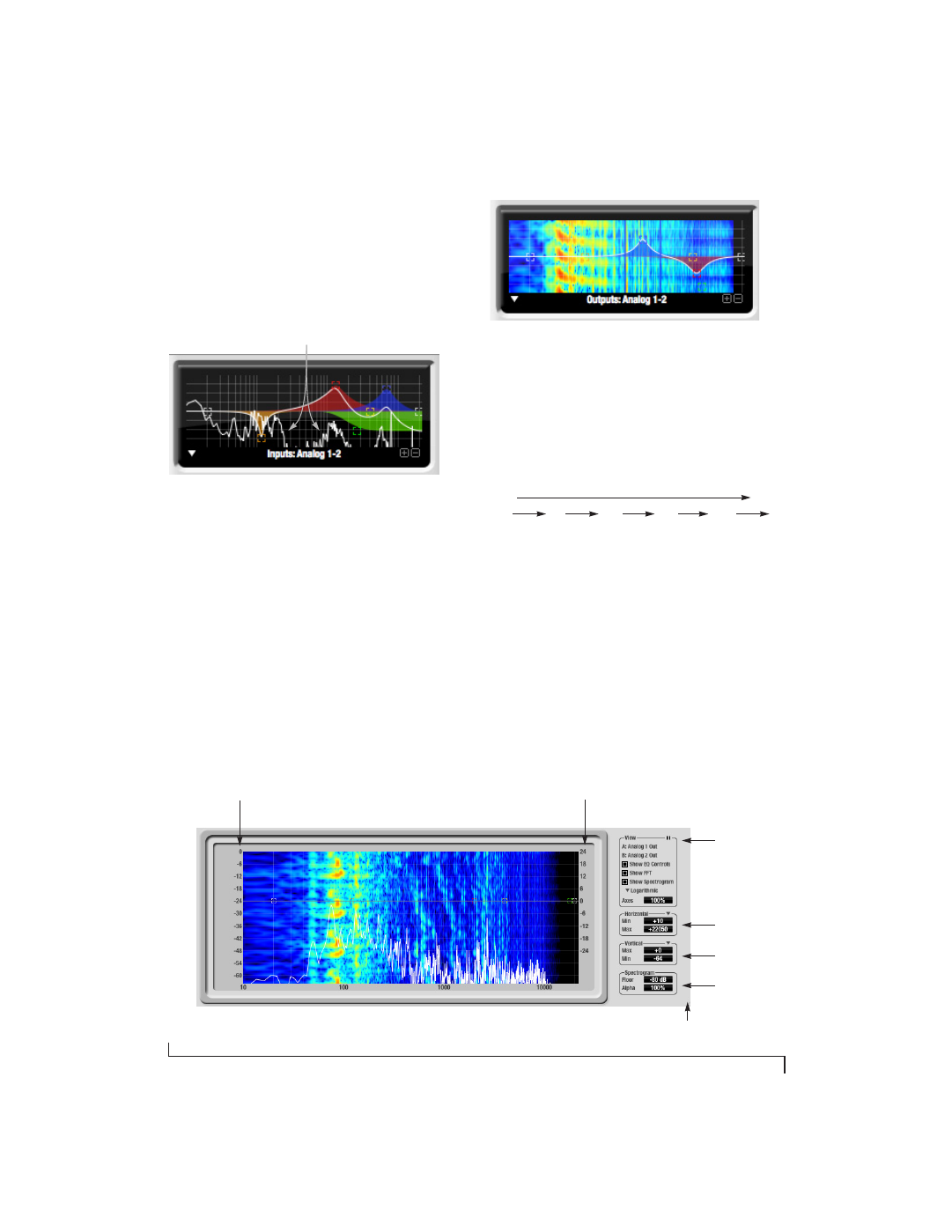Fft display, Spectrogram, Opening the fft analysis window – MOTU 828x 28x30 Audio Interface with ThunderTechnology User Manual
Page 94: View controls

C U E M I X F X
94
FFT display
Choose
Show FFT
from the
Filter display options
menu (Figure 9-10) to superimpose a real-time
Fast Fourier Transform (FFT) frequency
measurement curve over the EQ filter display, as
demonstrated in Figure 9-30:
Figure 9-30: FFT display.
The FFT curve is post-filter. Therefore, the FFT
shows the results of the EQ filter(s) being applied.
Use the global EQ button for the input or output
channel (Figure 9-3 and Figure 9-6, respectively)
to toggle between the EQ’d and non-EQ’d FFT
display for an A/B comparison.
Spectrogram
Choose
Show Spectrogram
from the
Filter display
options
menu (Figure 9-10) to superimpose a real-
time spectrogram “waterfall” display in the
background of the EQ filter display, as
demonstrated in Figure 9-31:
Figure 9-31: FFT display.
The spectrogram scrolls from top to bottom, where
the top edge of the display represents what you are
hearing “now”. Color represents amplitude along
the left/right frequency spectrum. The amplitude
color scale runs from black (silence) to red (full
scale) as follows:
Figure 9-32: Spectrogram color-to-amplitude spectrum.
Opening the FFT Analysis window
Choose
FFT Analysis
from the Devices menu
(Figure 9-27) to open a new window with the filter
EQ display for detailed inspection and adjustment
of the EQ filter, as shown Figure 9-29.
View controls
You can show and hide the FFT display,
spectrogram or EQ band response curves as
desired using the
View
controls
(Figure 9-33).
Figure 9-29: Full window filter display.
View
controls
Y-axis labels for EQ controls
Y-axis labels for FFT display
Horizontal
controls
Vertical
controls
Spectrogram
controls
Grow handle
FFT curve
Black
Blue
Green
Yellow
Orange
Red
Silence
Full scale
